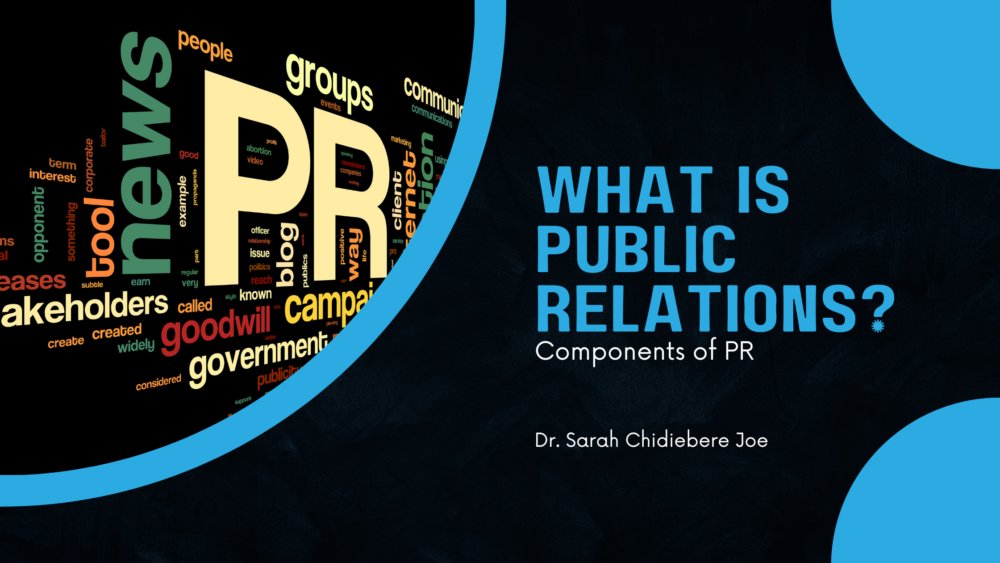By: Dr. Sarah Chidiebere Joe
Wilcox and Cameron (2009) say “public relations is a process involving many subtle and far-reaching aspects. It includes research and analysis, policy formation, programming, communication, and feedback from numerous publics. Its practitioners operate on two distinct levels – as advisers to their clients or an organisation’s top management and as technicians who produce and disseminate messages in multiple media channels” (p. 5).
Rex Harlow collected over 500 definitions of PR and summed it up as follows: Public relations is a distinctive management function which helps establish and maintain mutual lines of communication, understanding, acceptance, and cooperation between an organization and its publics; involves the management of problems or issues; helps management keep informed on and responsive to public opinion; defines and emphasizes the responsibility of management to serve the public interest; helps management keep abreast of and effectively utilize change, serving as an early warning system to help anticipate trends; and uses research and sound ethical communication techniques as its principal tools.
Cutlip, Center, and Broom define PR as “the management function that identifies, establishes, and maintains mutually beneficial relationships between an organisation and the various publics on whom its success or failure depends”.
Grunig and Todd say PR is “the management of communication between an organization and its publics”.
Long and Hazelton in what is more reflective of the current PR environment describe the field as “a communication function of management through which organisations adapt to, alter, or maintain their environment for the purpose of achieving organisational goals.” Central to this definition is the understanding that PR is mutually beneficial and that organisations can make behavioural adjustments in the greater interest of their publics.
At the heart of every popular definition of PR are the following concepts: Deliberate, Planned, Performance, Public Interest, Two-Way Communication, and Management Function.
PR as a process consists of four main elements – RACE (Research (What is the problem?), Action (What steps are to be taken to address the problem?), Communication/Execution (How will the public be informed?), and Evaluation (Was the message effective?).
The Components of PR
- Counselling – Offering advice to clients
- Research
- Media Relations – Dealing with the media
- Publicity – Widely circulating relevant information
- Employee relations – Ensuring employees are well informed
- Community relations – working with communities in the interest of organisations
- Public affairs – influencing public policy
- Issues management – handling issues of public concern that impact clients
- Financial relations – developing and sustaining healthy relationships with the financial community in the interest of clients
- Industry relations – relating with firms in the same industry as clients as well as trade associations
- Development/Fundraising – encouraging support for client’s projects through financial contributions
- Multicultural relations/workplace diversity – fostering a healthy work environment for all
- Special events – planning and organising events in the interest of clients
- Marketing Communications – Advertising, collating resources, publicity, promotion, trade shows, and special events.












